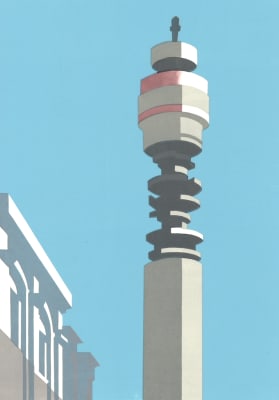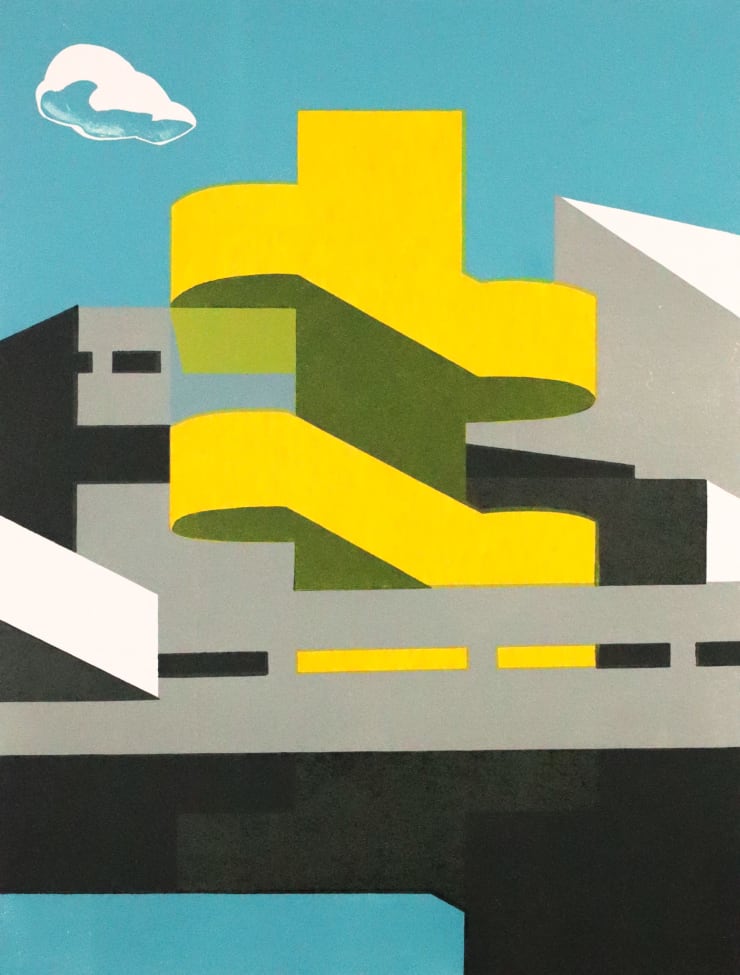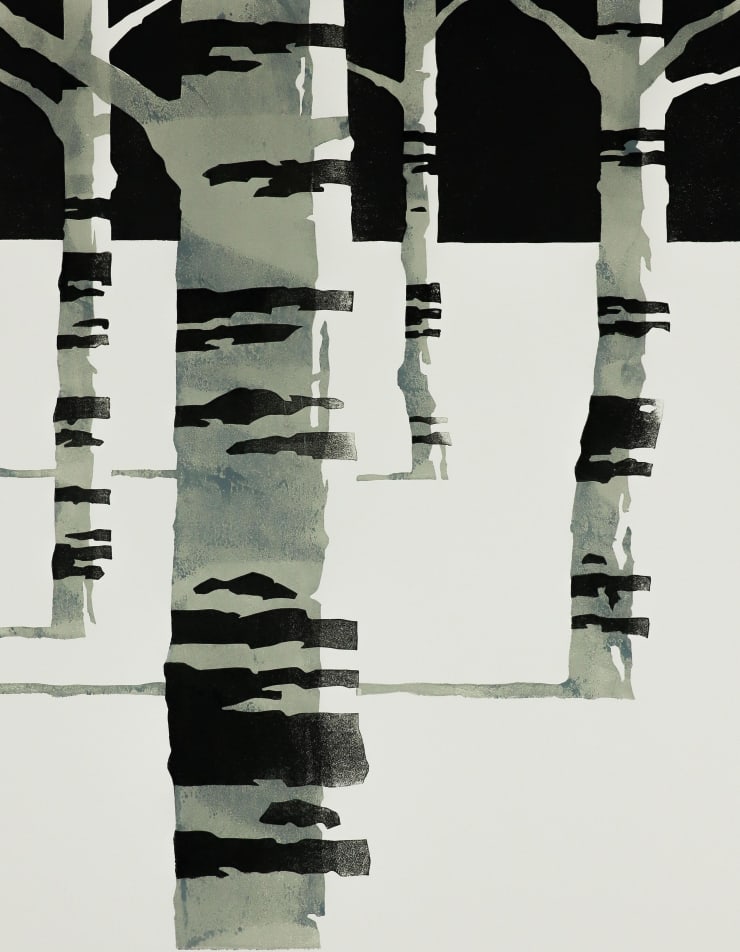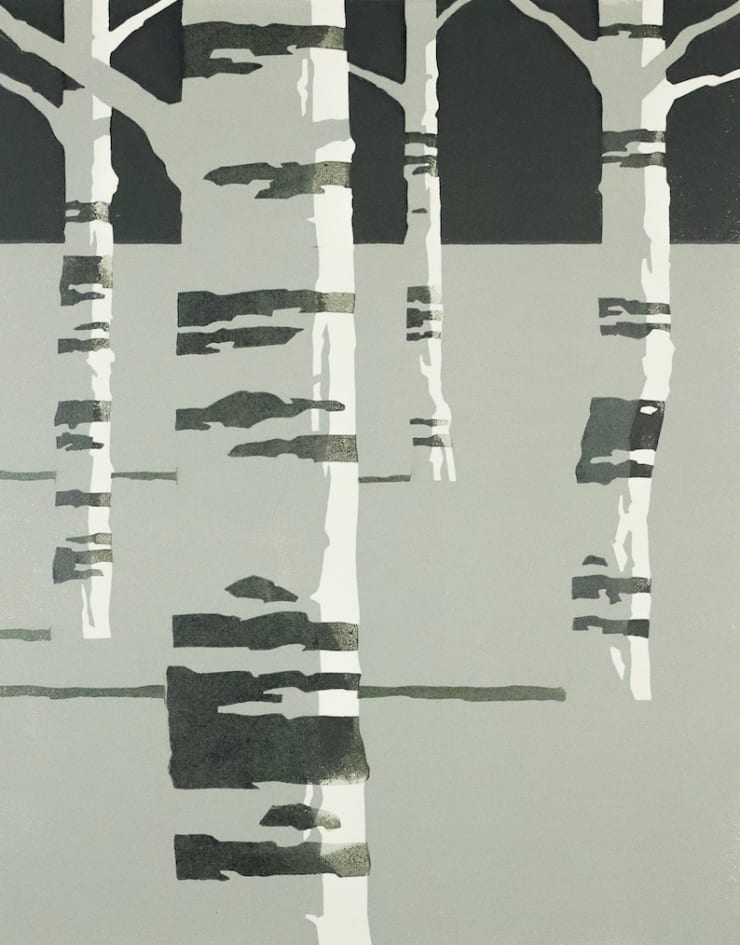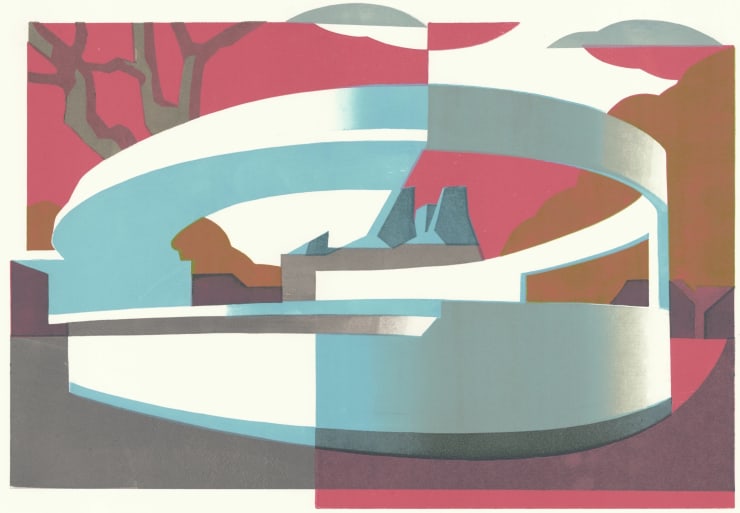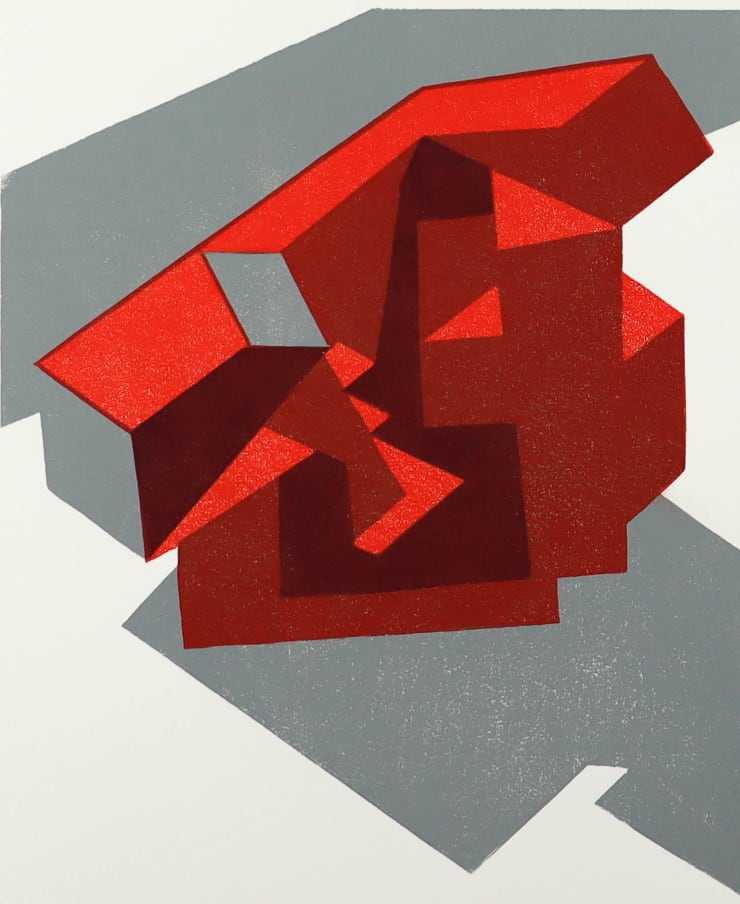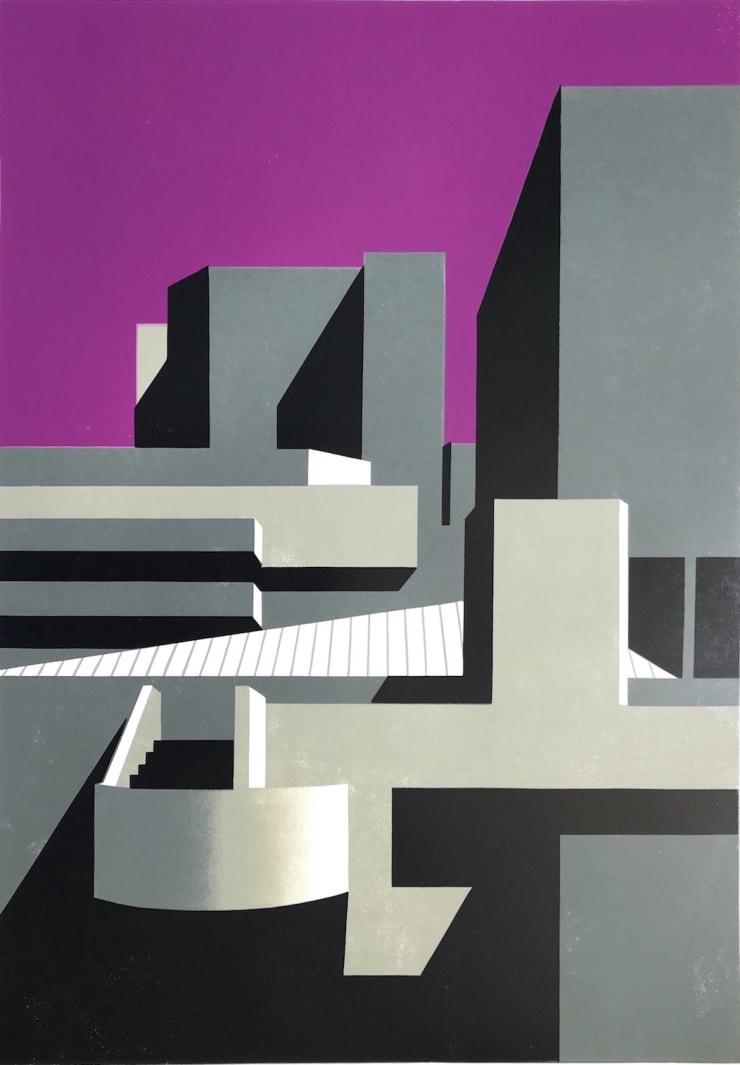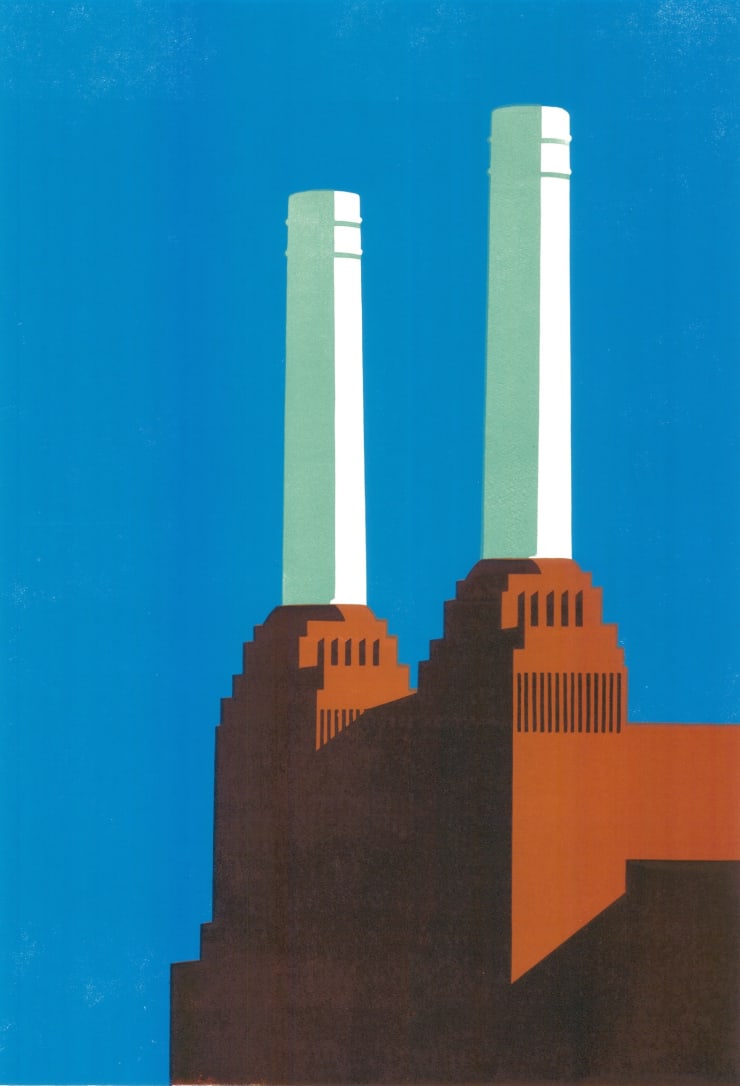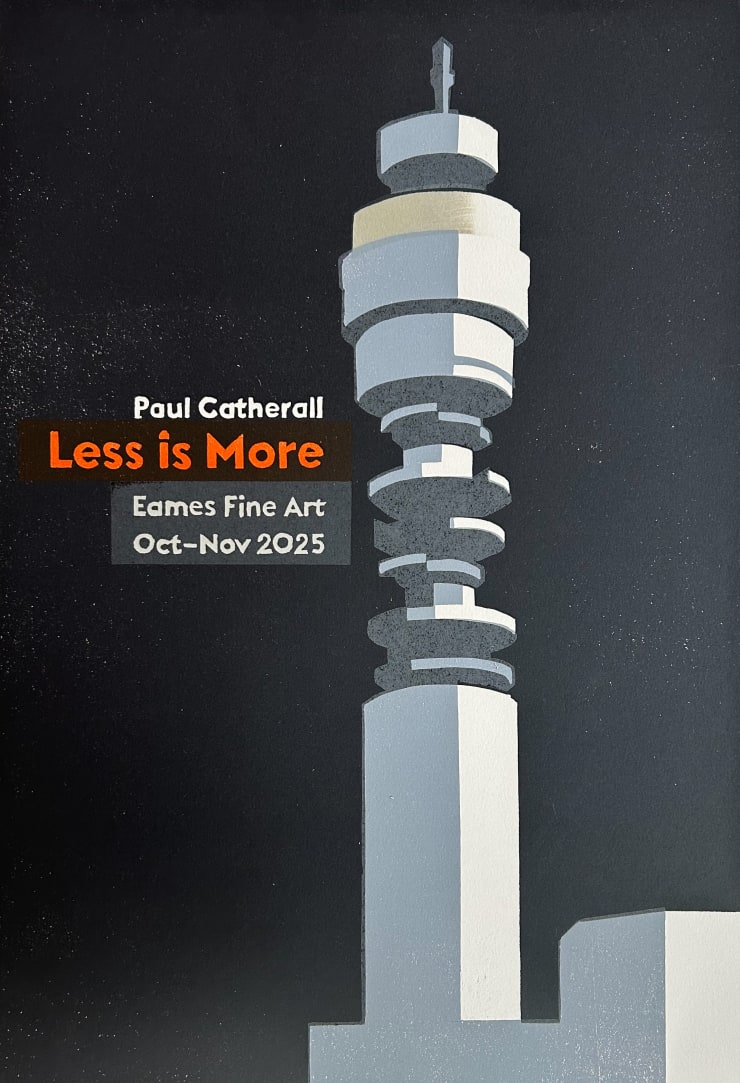A new exhibition of original linocuts at the Eames Fine Art Gallery
58 Bermondsey Street, London SE1 3UD
In Paul's own words: "This show marks a return to a mantra I've found myself using time and again over the years - the notion that, in design, 'less is more'."
The process of creating his striking linocuts begins - always - with a sketch, followed by hours spent refining the drawing to what can be left out rather than added in. "The images become simpler and simpler until I have the essence of the composition."
Over the years, various commissions and subject matter have led Paul to greater experimentation - from layers and textures to painterly application of inks, creating an astonishing and impressive body of work.
But now, for this exhibition, he has embarked upon a return to the more pared down approach that marked some of his most well-known and iconic early works.
Less is More revisits old favourites - from Battersea Power Station to Tate Modern - and introduces new, such as Victor Pasmore's Apollo Pavilion and a set of birch tree prints, embracing that same beautiful simplicity fused with experimental techniques.
-
-
 Paul CatherallBarbican Orange II, 2025£625.00
Paul CatherallBarbican Orange II, 2025£625.00 -
 Paul CatherallTate Red III, 2025£625.00
Paul CatherallTate Red III, 2025£625.00 -
 Paul CatherallBattersea Brick III, 2025£625.00
Paul CatherallBattersea Brick III, 2025£625.00 -
 Paul CatherallTelecom Pink, 2025£625.00
Paul CatherallTelecom Pink, 2025£625.00 -
 Paul CatherallBarbican Blue, 2025£625.00
Paul CatherallBarbican Blue, 2025£625.00 -
 Paul CatherallSouthbank Steps Yellow II, 2025£625.00
Paul CatherallSouthbank Steps Yellow II, 2025£625.00 -
 Paul CatherallBridge Lime II, 2025£625.00
Paul CatherallBridge Lime II, 2025£625.00 -
 Paul CatherallTelecom Blue, 2025£625.00
Paul CatherallTelecom Blue, 2025£625.00
-
-
One of my very first goals was imagining my prints working at stamp size as well as poster size – the sign of a good design. In fact, I was commissioned by Royal Mail three times to produce a print in consideration for a set of stamps.
For years I started each design with a sketch and spent forever refining the drawing and working out what I could leave out rather than what I could add. The images became simpler and simpler until I felt I had the essence of the composition. To add anything would be unnecessary but to take anything away would make the design fall apart. Whenever I lead a workshop or talk to students as a visiting lecturer I find myself using the refrain “less is more” again and again.
Over the years, certain commissions and subject matter led to a shift away from this mantra and I embellished the prints with more layers and textures (although never unnecessary details), experimenting with printing techniques and becoming more painterly with the application of inks.
-
In 2024, a couple of things instigated a return to the simpler aesthetic. One was a book jacket commission for the maths blogger Matt Parker, where I created a simple print of a mathematical shape using two colours and three tones. It was such a pleasure to return to the ‘less is more’ aesthetic in terms of the beauty of a simple print – it felt ‘pure’.
The second was when visiting an exhibition of the Italian designer Enzo Mari at the Design Museum. I really related to his description of his screenprint of an apple, Uno, La Mela: “It mustn’t be an apple, but rather the apple.” I remembered that I had wanted my image of Battersea Power Station to be the Battersea Power Station; for it to have no unnecessary embellishment and for it to work both as the size of a stamp and the size of a poster.
-
Book Cover Commissions
-
This led to a return to this pared down way of creating prints. And it felt timely to return to compositions that were created 20–25 years ago – all long sold out, but still requested – and to re-examine them through this minimalist lens.
So, I have set out on a journey to revisit some old favourites and create some new – like the soon to be refurbished BT Tower, and a set of birch tree prints that sit within that ‘less is more’ philosophy.
The two approaches come together in two new prints of Victor Pasmore’s celebrated brutalist piece of public art, the Apollo Pavillion at Peterlee. The exhibition will showcase all of these along with recent commissions, some prints that followed the more illustrative, textured path, rare book covers, and a design for the RSC.
-
Small Black and White Linocuts
